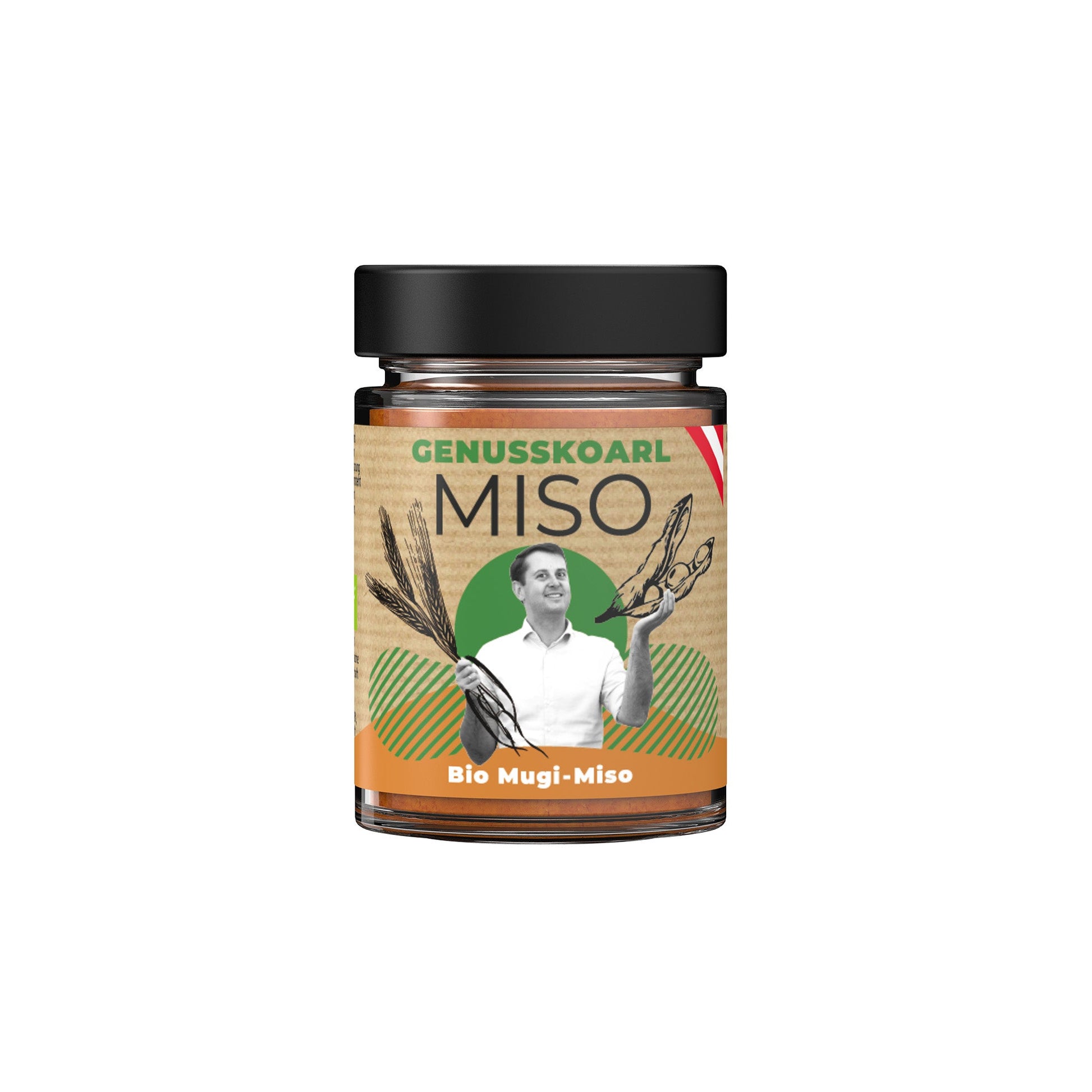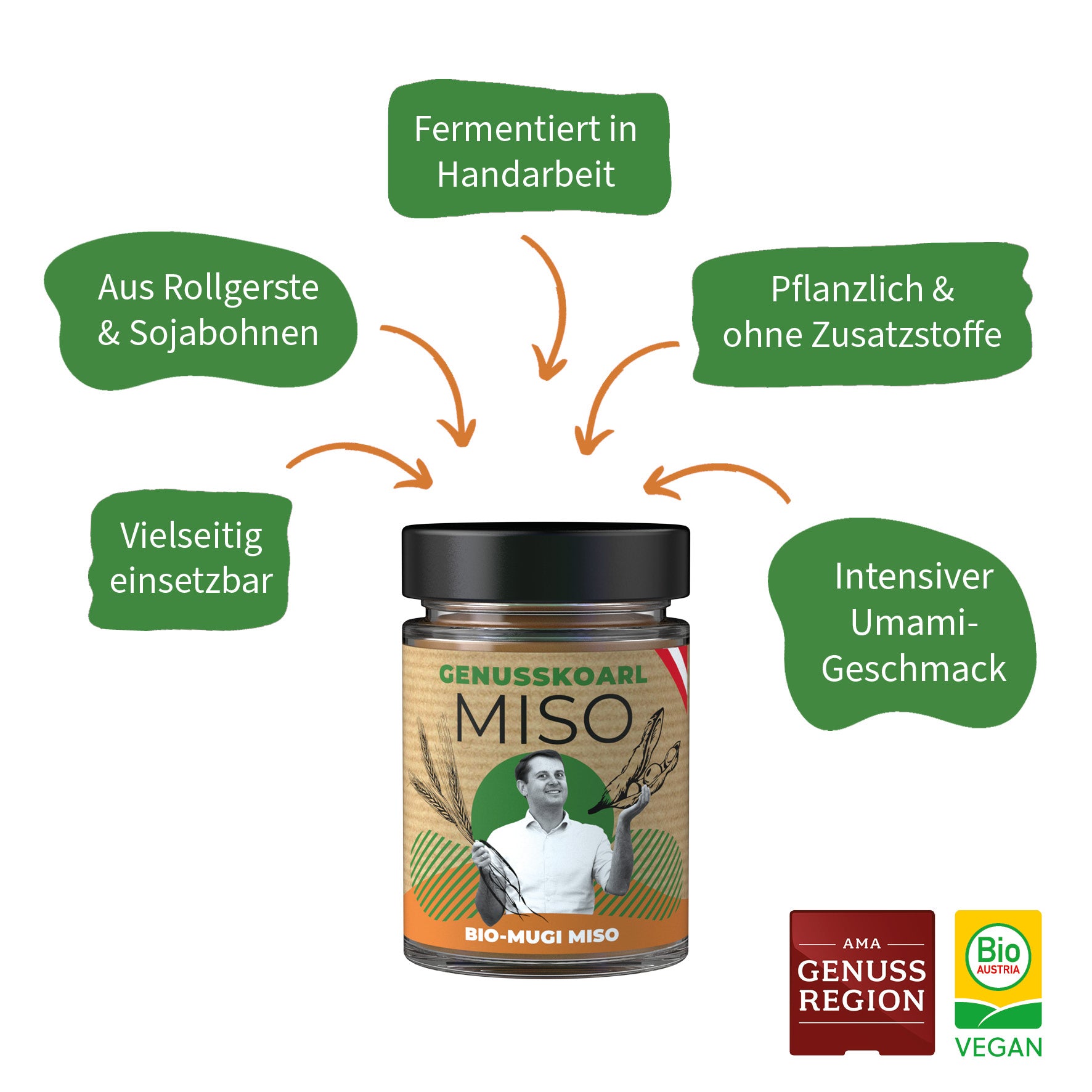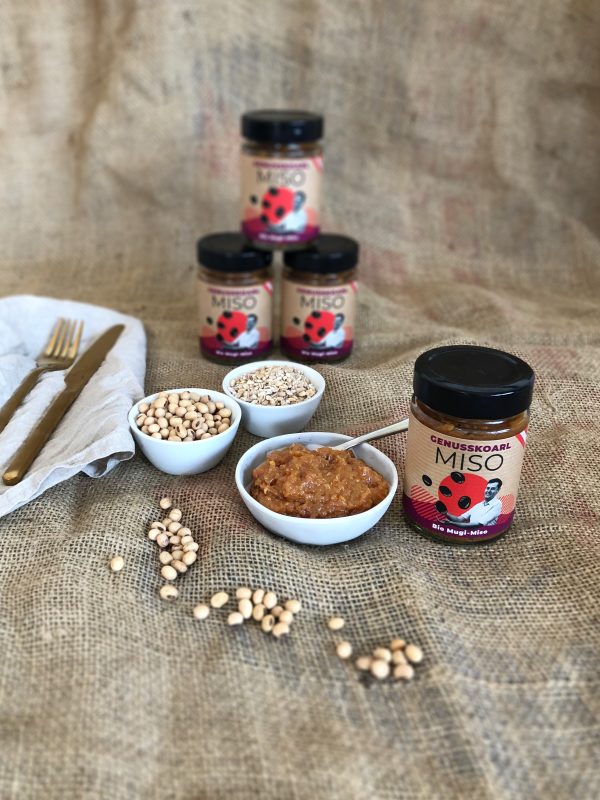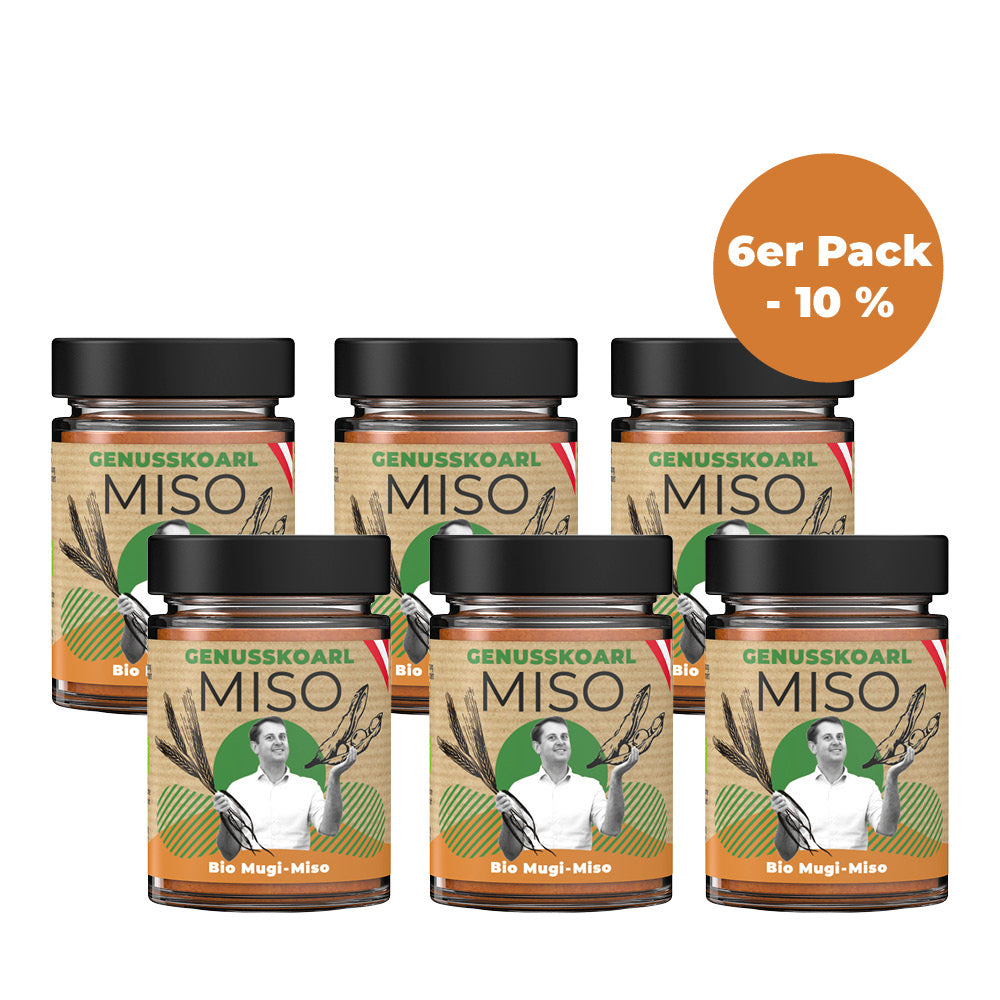Mugi Miso
Mugi Miso
Couldn't load pickup availability
Description
Description
“My Mugi miso made from local organic soybeans and organic barley is traditionally brewed and comes in the chunky tsubu quality, in which the origin of the ingredients can be recognized. Gently fermented, it creates a hearty, spicy paste that turns every dish into a poem.”
Enjoy it, your gourmet koarl
purely plant-based – vegan
100% Austrian organic farming
Brewing process
Brewing process
Miso is a seasoning paste that is very important in traditional Japanese cuisine. It is traditionally made from soybeans and rice or barley. As with soy sauce, the first step in fermentation involves fermentation with the noble mold Aspergillus Oryzae and grain. In the second step, a paste is made from the fermented grain along with cooked soybeans and salt. This paste matures for several months and develops the classic savory umami taste before it is packaged.
In addition to water and salt, miso pastes require two other ingredients in the classic production method. On the one hand, a source of protein such as legumes (soybeans, lentils, peas, chickpeas, lupine, etc.) or press cakes from oil production, which are also very high in protein such as pumpkin seed protein, poppy seed protein, etc. and on the other hand, a source of carbohydrates such as grains (rice, barley , wheat) or pseudo cereals such as buckwheat, amaranth and quinoa. Due to this large number of possible combinations, there are also many different misos. The taste can also be greatly influenced by the length of maturation.
The areas of application of miso are very wide. The pleasant umami taste is almost always a welcome guest. In addition to the well-known miso soup, it can also be used to marinate meat or season a stew.
Ingredients
Ingredients
Water from Wolkersdorf, Lower Austria
Organic ROLLED BARLEY from Austria
Organic soybeans (18%) from Lower Austria
uniodized salt from the Salzkammergut, Upper Austria
Nutritional values
Nutritional values
Average content per 100 g
Energy 673 kJ / 160 kcal
Fat 3.4g
of which saturated fatty acids 0.6 g
Carbohydrates 19g
of which sugar 0 g
Protein 9.3 g
Salt 8.0 g
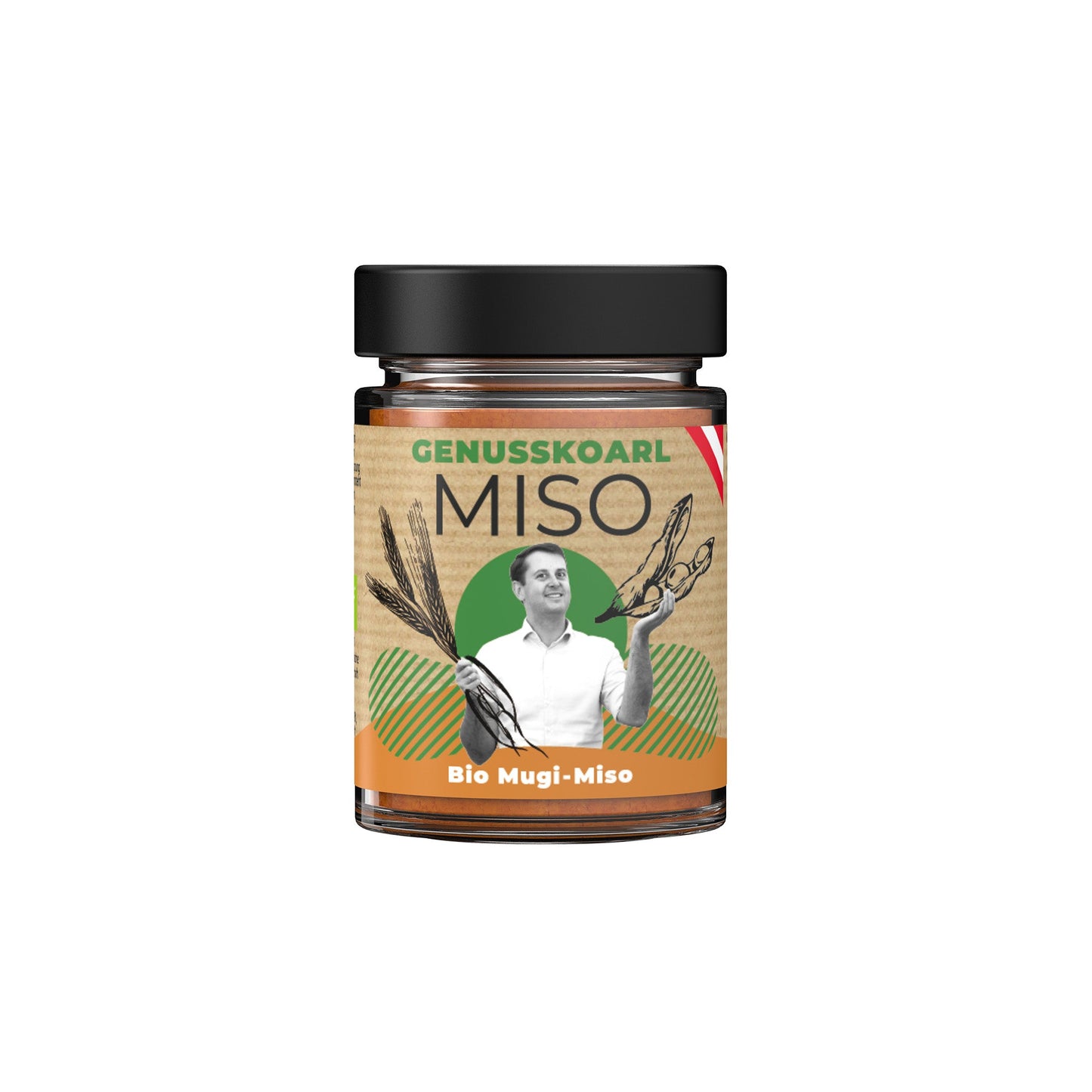


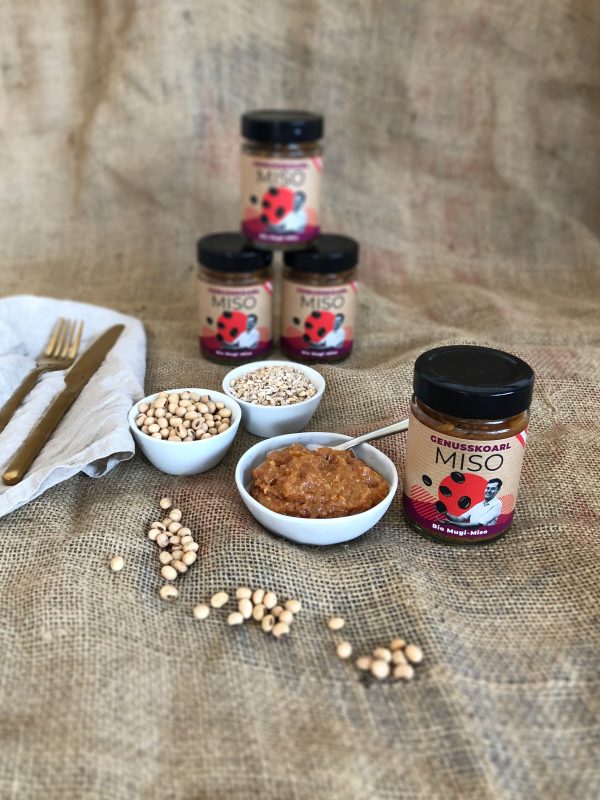
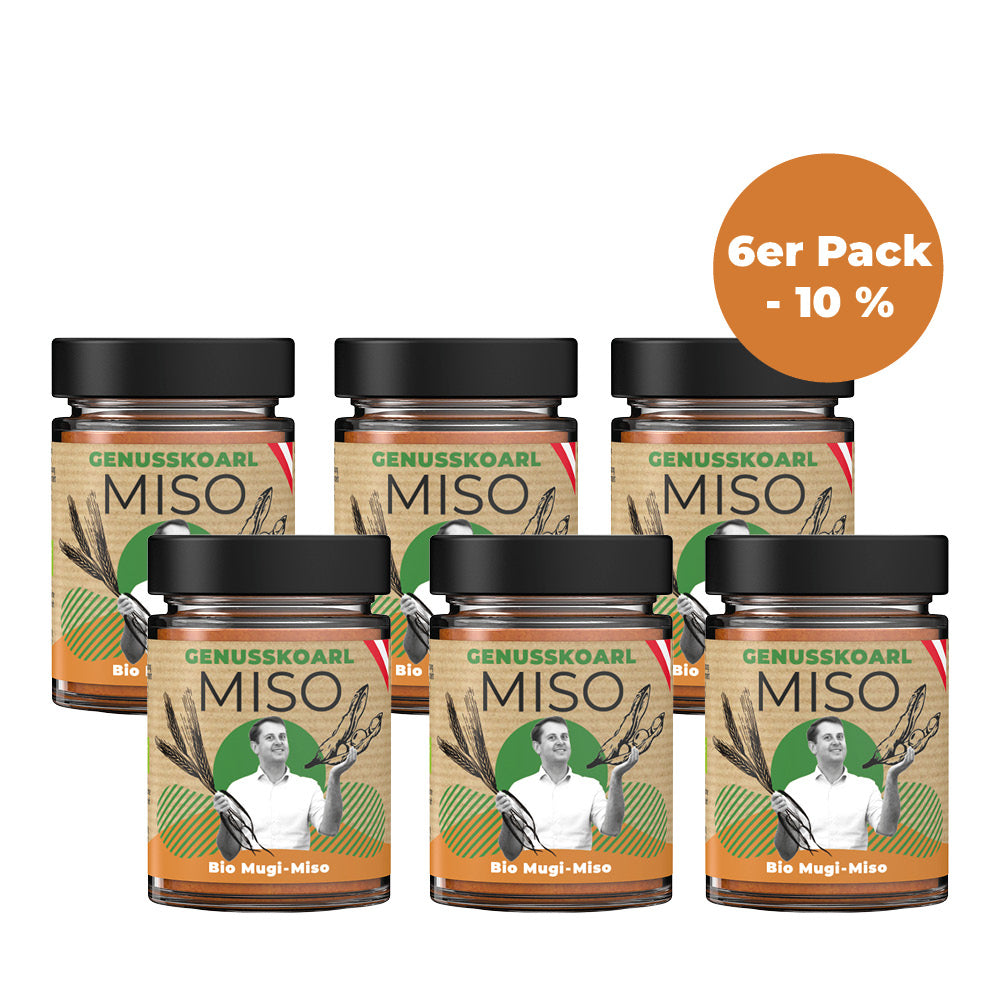
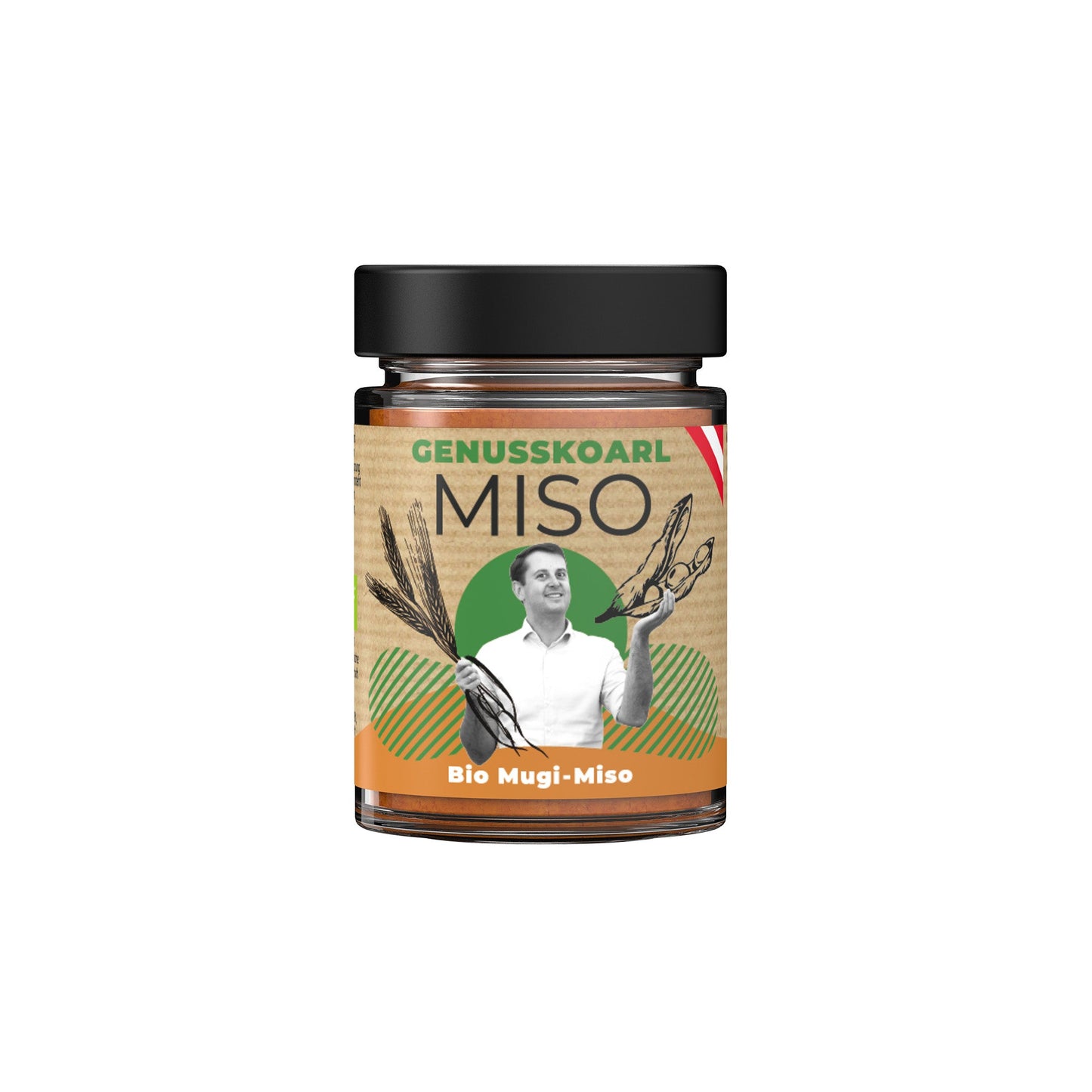
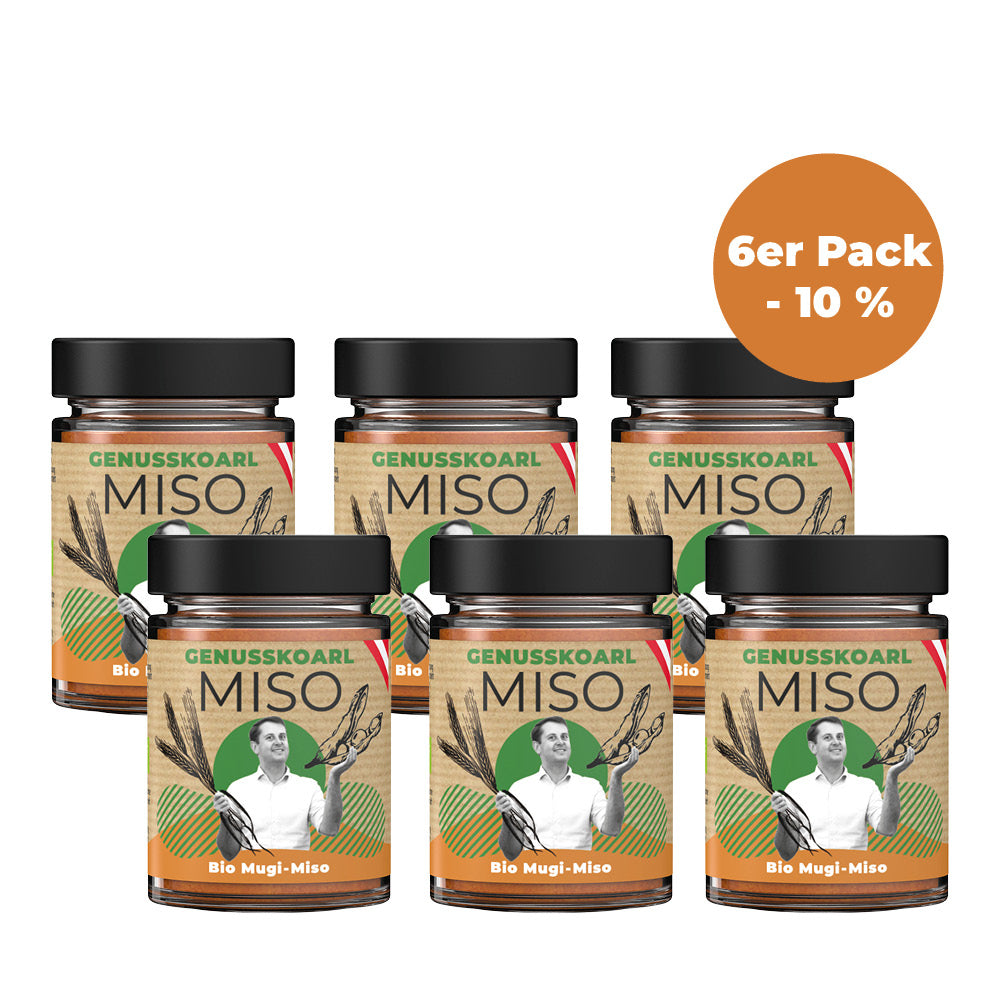
Vielseitige Anwendungsmöglichkeiten von Mugi Miso
Mugi Miso, die herzhafte Gersten-Miso-Variante, ist ein echtes Allround-Talent in der Küche. Ob als würzige Basis für Suppen, Dressings oder Marinaden – Mugi Miso verleiht Gerichten eine angenehme Tiefe und ein natürliches Umami. Es eignet sich hervorragend zum Verfeinern von Gemüsegerichten, als geschmackvolle Zutat in Eintöpfen oder als raffinierte Würze für Dips und Aufstriche. Dank seines milden, leicht süßlichen Aromas harmoniert es besonders gut mit herzhaften sowie süßlichen Speisen und ist eine perfekte Ergänzung für eine ausgewogene, pflanzliche Ernährung.
The art of miso production and its culinary diversity
Story
One of Japan's oldest culinary traditions, miso has a fascinating history dating back to ancient times. This rich history is detailed in books such as The Book of Miso: Savory Fermented Soy Seasoning. The art of making miso is closely linked to Japanese culture and its love of fermentation. Over the centuries, miso has evolved from a simple condiment into a culinary treasure that is conquering the world.
Making miso
In works like the “Noma Handbook Fermentation” we learn that making miso is an art form in itself. This begins with the careful selection of legumes such as soy, beans and others, combined with grains such as rice or barley. The process is similar to that of seasoning sauces, with koji being made in the first step. Grain is soaked, steamed and inoculated with the noble mold Aspergillus Orycae and fermented into a compact koji cake after 48 hours. In the second step, this koji is mixed with salt and the cooked legumes, traditionally soy, and placed in a tank to ripen. This is where the magic of fermentation unfolds thanks to the enzymes in the koji, and after a certain amount of time the delicious miso is created.
Applications
Miso is not just a seasoning paste, but a culinary all-rounder. From traditional miso soups to innovative marinades and dressings - the creative use of miso has no limits. A variety of cookbooks not only offer insights into the traditional use of miso, but also
also encourage you to push culinary boundaries and try miso in new and exciting recipes.
sorts
There are many different types of miso that differ in color, taste and consistency. Here are some of the most famous miso varieties:
1. Shiro Miso (White Miso):
- Color: Yellow to light yellow.
- Taste: Mild, sweet and less salty.
- Production: Made from a mixture of soybeans and rice or barley, fermented for shorter periods of time.
2. Aka Miso (Red Miso):
- Color: Dark brown to red.
- Taste: Strong, salty and umami.
- Production: Contains a higher proportion of soybeans and is fermented for longer, resulting in a more intense color and taste.
3. Awase Miso (Mixed Miso):
- Color: shades of brown.
- Taste: A balanced mix of sweet and salty.
- **Production:** Combines different types of miso, such as Shiromiso and Akamiso, to achieve a balanced taste.
4. Saikyo Miso:
- Color: Light yellow to white.
- Taste: Sweet and mild.
- Production: Originally from the Kyoto region of Japan, Saikyo Miso is made with less salt and a higher amount of rice, resulting in its mild taste.
5. Hatcho Miso:
- Color: Dark brown to black.
- Taste: Savory, salty and earthy.
- Production: Made exclusively from soybeans, with no added grains, and is fermented for longer, resulting in a dark color and strong taste.
6. Kome Miso (Rice Miso):
- Color: Light brown.
- Taste: Mild, slightly sweet.
- Production: Contains a higher amount of rice and is often produced in southern regions of Japan.
7. Mugi Miso (Barley Miso):
- Color: shades of brown.
- Taste: Savory, slightly sweet and salty.
- Production: Contains a higher amount of barley and has a strong taste.
These descriptions provide a general overview of some of the most well-known miso varieties. The variety in color, flavor and texture allows chefs to choose different types of miso depending on the dish and personal preferences.

